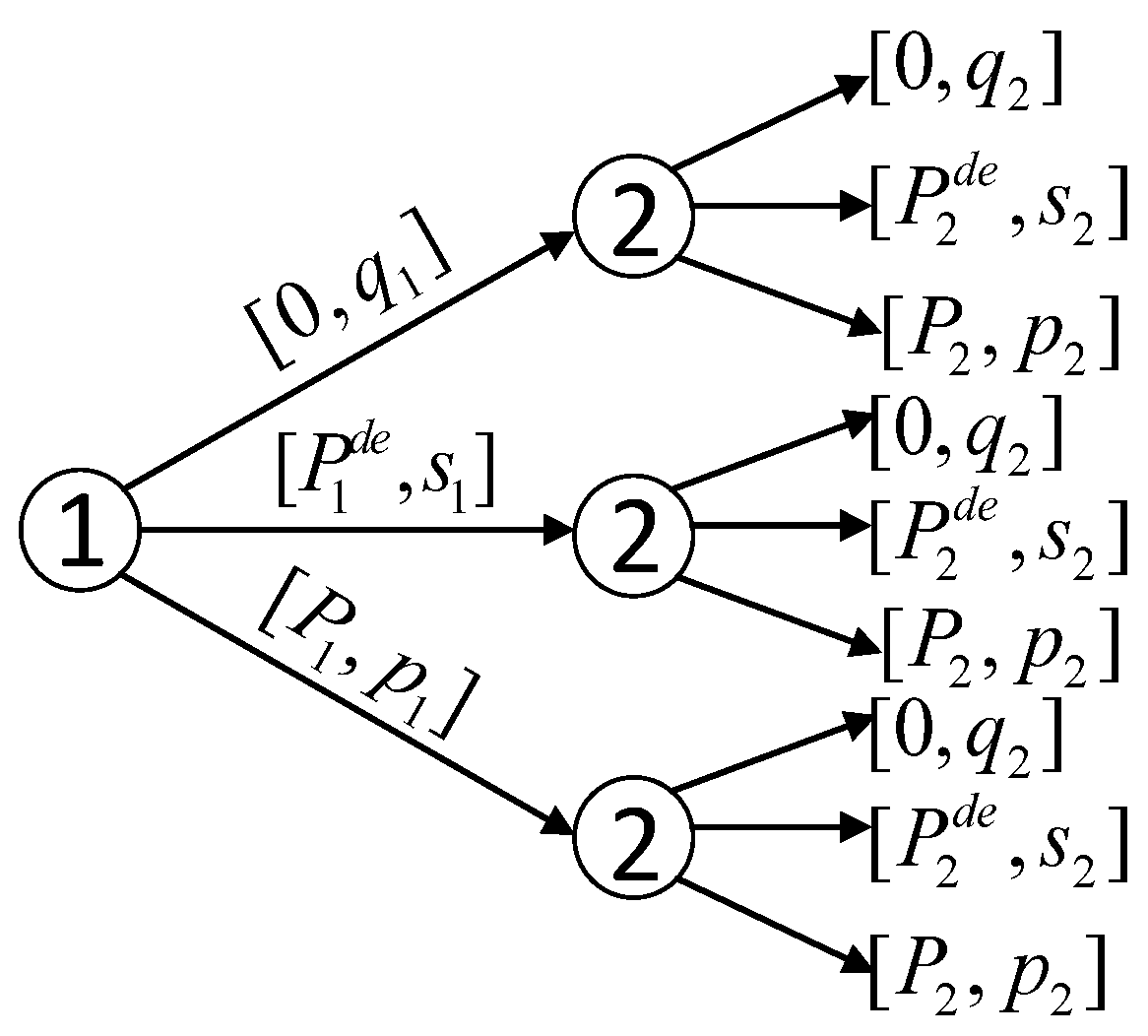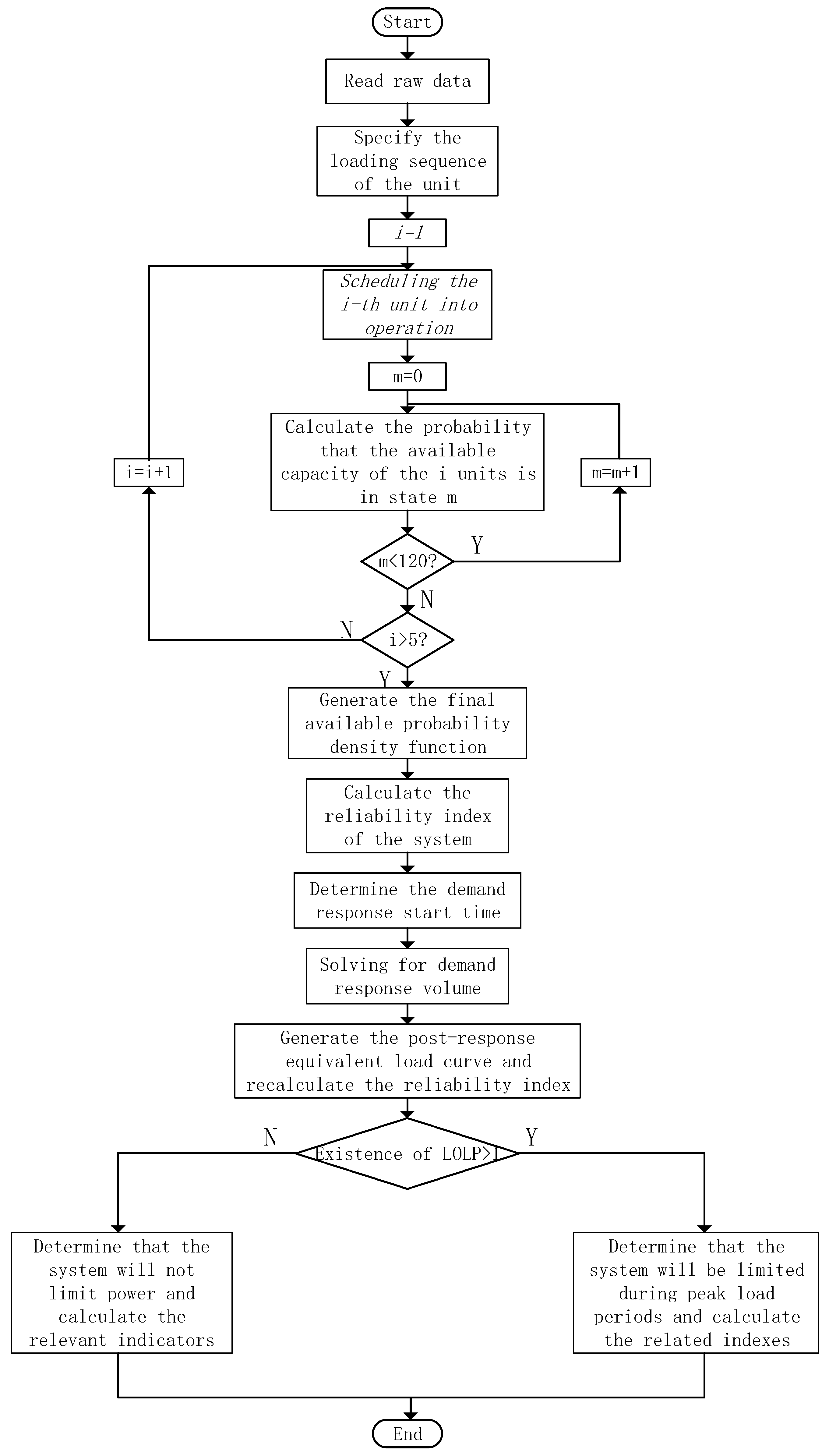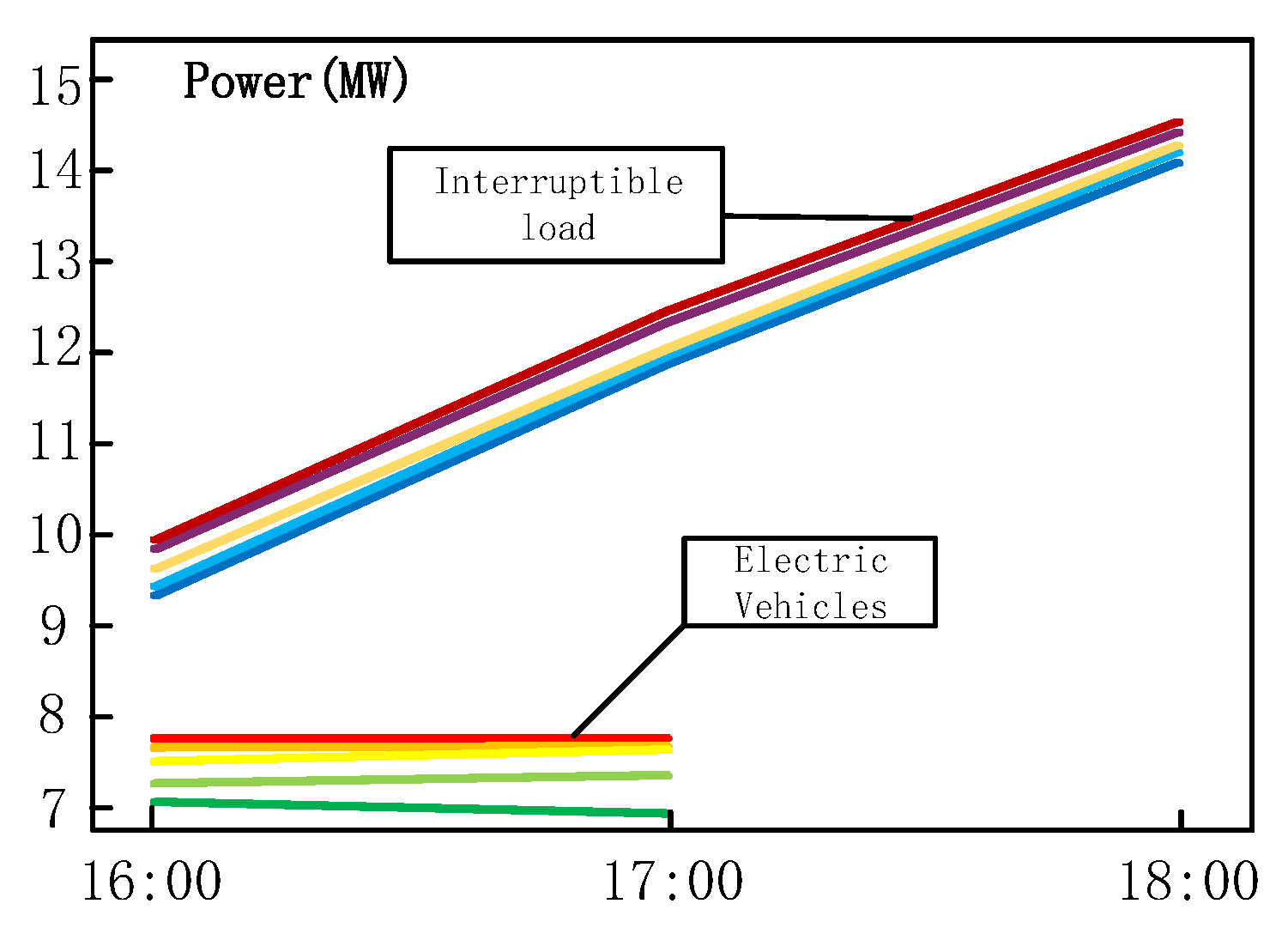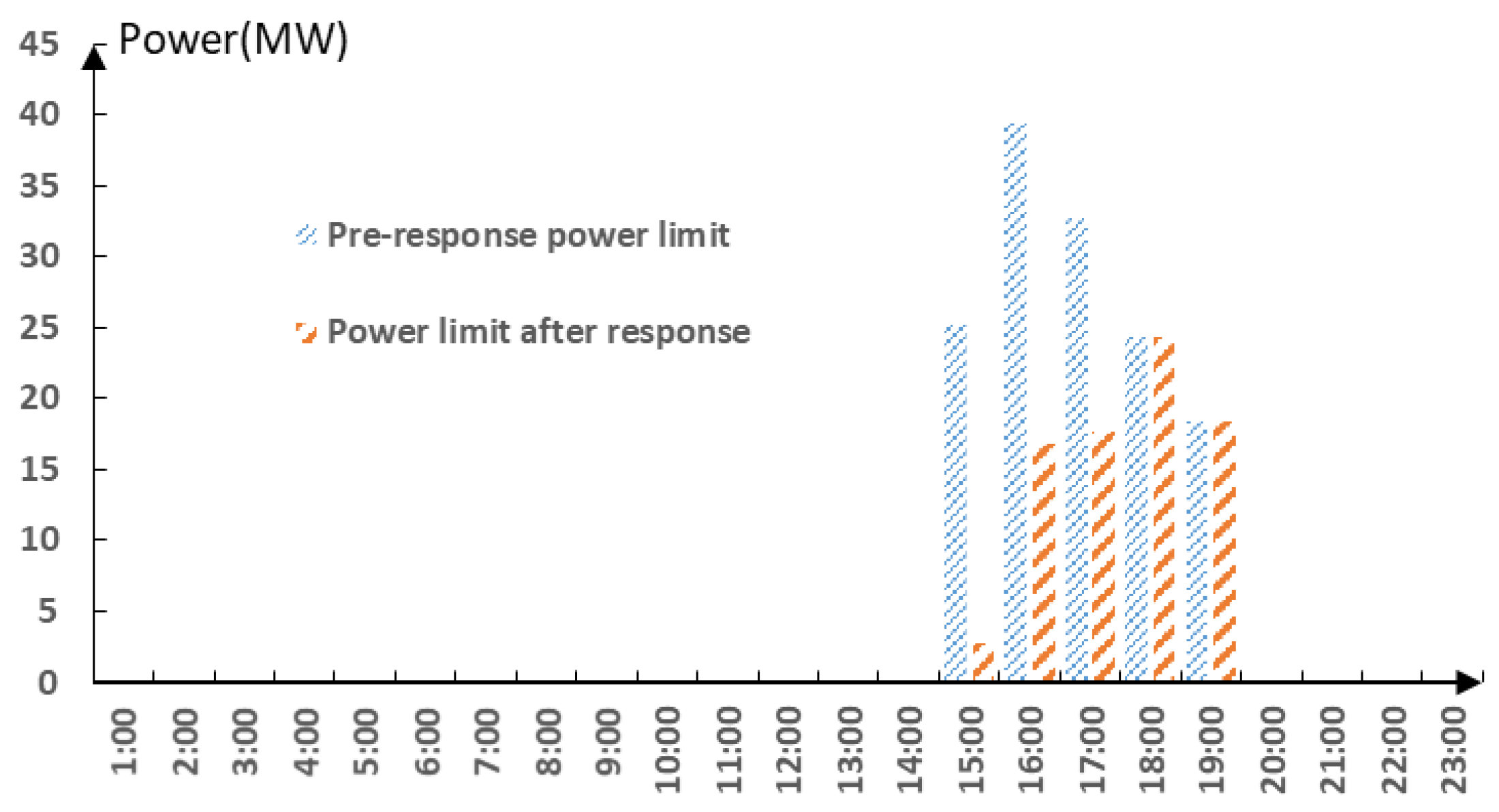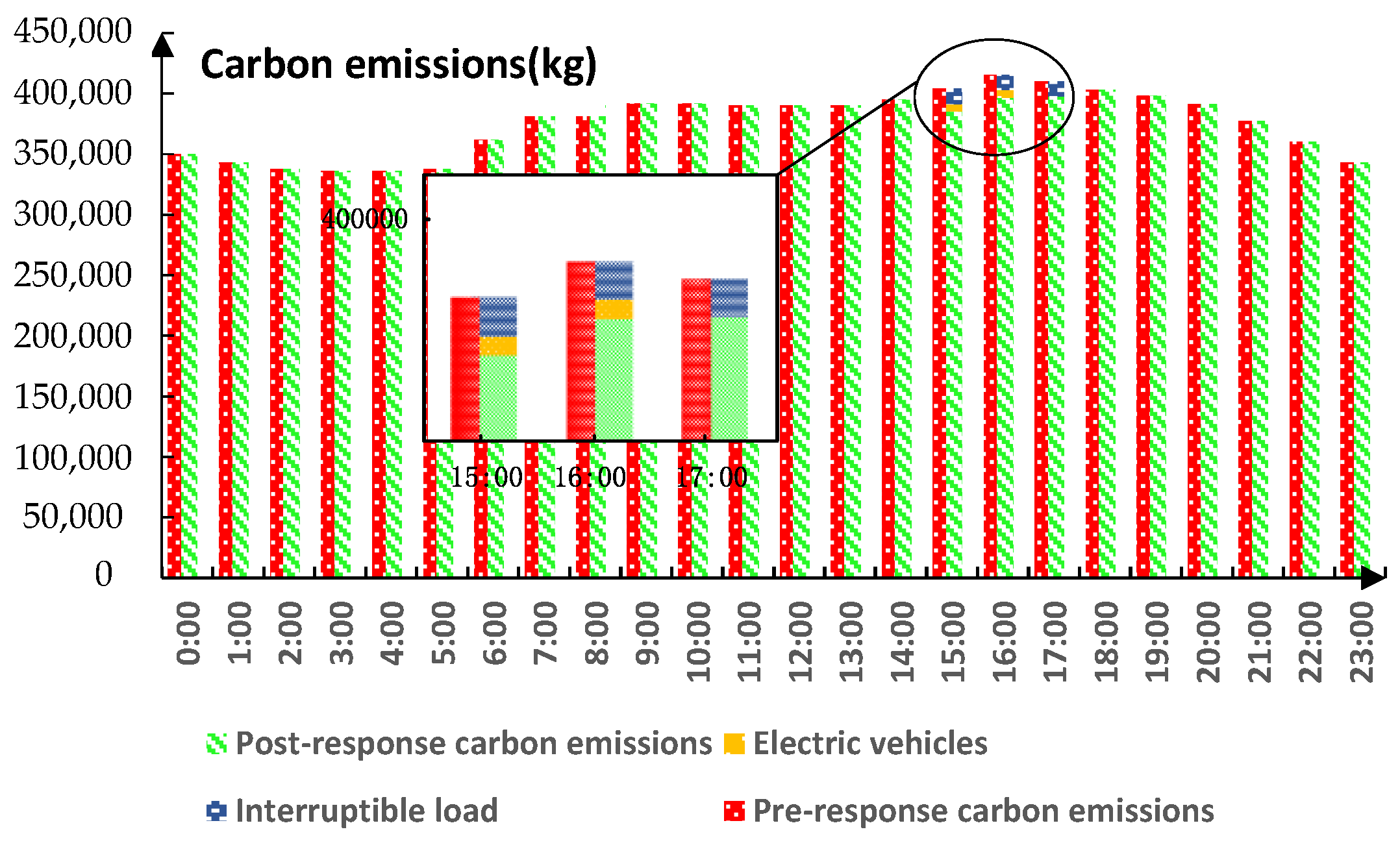As one of the effective means of demand-side management, demand response guides various types of power market players to tap peaking resources and participate in demand response according to their own conditions to improve the operational efficiency of the power system and reduce operational costs [
21,
22]. Demand response is divided into price-based [
23] and incentive-based [
24], in which incentive-based demand response motivates users to participate in response by economic means while setting penalty prices to reduce the probability of user default. However, unlike the traditional supply-side generation system, due to the uncertainty of the external environment and the limited ability of individual users to process and recognize information, it is difficult for demand-side response users to always pursue their own economic efficiency maximization and respond accurately to the changes in the external environment. Therefore, when analyzing the response effect, it is necessary to consider the inevitable demand response uncertainty on the user side and to have sufficient understanding and modeling analysis of the demand response mechanism and uncertainty in order to obtain a more reasonable and accurate demand response peak shaving and emission reduction effect [
25,
26].
2.2.1. Target Function
The main objective of demand response resources in peak load reduction is twofold: firstly, to reduce the peak-to-valley difference of grid load so that power generation and consumption tend to balance and avoid power pulling and restriction as far as possible; secondly, to use clean demand-side resources to replace a part of traditional thermal power units to achieve the purpose of energy saving and emission reduction.
(1) When the demand response resource capacity can meet the requirements of power balance during peak load, the system will not experience power shortage, and the response cost is the peak shaving cost, so the lowest demand-side response service cost and the highest carbon emission reduction are taken as the optimization objectives.
Firstly, it is clear that the demand response cost is the change of power revenue before and after load reduction. Before demand response, the revenue of power companies is mainly electricity revenue.
where
is the revenue of the electric utility before the demand response resource participates in the peak shaving response;
r0 is the retail electricity price, based on the integrated average electricity price;
is the load of the
nth demand response resource at the moment
t before the demand response is implemented.
Demand-side resources participate in peak-shaving response and reduce the utility’s electricity revenue while paying additional demand response costs.
where
is the revenue of the power company after the demand response resource participates in the peak shaving response;
Ln,t is the load reduction of the
nth demand response resource at the time;
Cn,t is the financial compensation of the power company to the customers participating in the demand response;
an and
bn are the quadratic and primary coefficients of the compensation amount of the
nth demand response resource, respectively.
Therefore, the response cost of demand-side resources during peak load periods is:
Bringing Equations (6) and (7) into Equation (8), the relationship between response cost and load reduction is obtained as:
The cost of peak shaving is:
where
H is the number of demand response resources.
Since there is no direct link between power generation and carbon emissions from coal-fired power plants, it is necessary to first determine the coal consumption of thermal power plants based on the coal consumption coefficients of each unit; then, the carbon content of the coal consumed is determined by selecting the appropriate carbon content coefficient according to the type of coal combusted; and finally, the carbon emissions of thermal power plants are obtained based on the actual carbon generation CO
2 coefficient, i.e., the carbon emission reduction of thermal power plants after the participation of demand response resources in peak shaving is [
27]:
where
C is the CO
2 emission;
μ1 is the coal consumption factor;
μ2 is the carbon content factor;
μ3 is the carbon generation CO
2 factor.
(2) When the demand response capacity cannot fully meet the requirements of power balance during the peak load period, the minimum peak shaving cost and orderly power consumption management scale, the minimum peak shaving cost and the maximum carbon emission reduction are taken as the optimization objectives. At this time, the peak shaving cost consists of response cost and power shortage cost.
where
Pt is the unit output for the time period;
E is the amount of power pulling limit;
rw is the unit cost of power shortage.
In the above calculations, it is considered that demand response users can fully respond to the demand side according to the response amount agreed in advance when the load fluctuates violently. However, in practice, there is great uncertainty in the response of each user after the load reduction order is issued. Demand responsive users have three situations: over response, full response, and under response. The first two have little negative impact on the power company. The power company only needs to compensate the responsive users according to Formula (9) according to the agreed load reduction and does not need to pay other fees. When the responding user fails to reduce by a certain amount of load as required, the power company will compensate the user according to the actual load reduction of the user. However, at this time, the power company needs to consider the risk of power shortage caused by demand response and user under response; that is, although the power company reduces the response cost, it needs to bear the risks of re-purchasing high-priced power generation capacity and maintaining network security and stability.
Therefore, when considering the uncertainty of demand response, the actual load reduction is divided into agreed load reduction and random deviation. The peak shaving cost, minimum power limit, and carbon emission reduction are shown in Formulas (13)–(15).
where
is the agreed load reduction of demand response resources;
is the stochastic deviation amount.
2.2.2. Constraints
Electricity users participate in response during the peak load period to obtain economic benefits while reducing the sense of electricity experience to a certain extent, so the response satisfaction of users participating in demand response must be considered in the demand response model, so the energy response constraint and time response constraint are added to the model, and the specific constraints are as follows.
(1) Load reduction constraint. The load shedding energy of a demand response resource should be less than the maximum capacity it can provide and should also be greater than 0 (in a responsive state).
where
represents the maximum load reduction of the
nst demand response resource in the time period;
μn,t is energy invocation status in the time period, 1 means invoked, 0 means not invoked.
(2) Response duration constraint. When receiving dispatching instructions from the trading center, the demand response resources in the operation area need to be dispatched. If the time response characteristics are not controlled, it will bring greater pressure to the actual operation of suppliers and also affect the basic electricity demand of customers. In order to facilitate customers to adjust their production and living electricity plans as well as to take into account the technical characteristics of each demand response resource, the response time should be limited to a certain range.
where
Tn represents the response time of the
nth demand response resource in the scheduling cycle;
and
represent its minimum and maximum response times in the scheduling cycle.
In summary, the flow of demand response analysis taking into account unit uncertainty is shown in
Figure 3.
